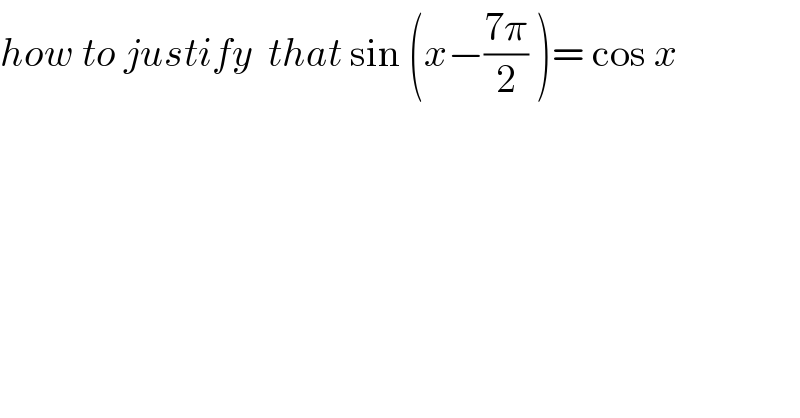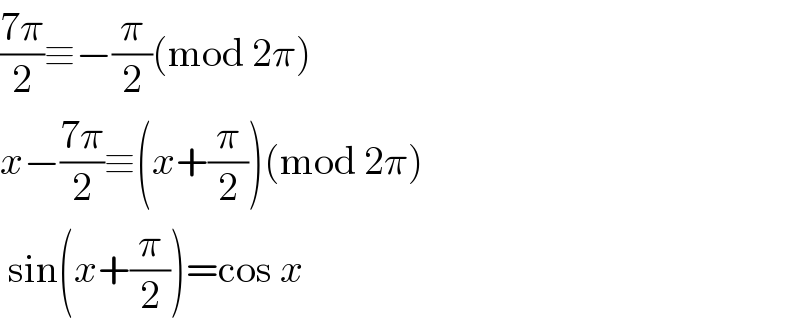Question Number 120244 by zahaku last updated on 30/Oct/20

Commented by zahaku last updated on 30/Oct/20

Commented by Aziztisffola last updated on 30/Oct/20

Answered by benjo_mathlover last updated on 30/Oct/20
![⇒sin (x−((7π)/2))=−sin (2π+(x+((3π)/2))) = −sin (x+((3π)/2)) =−[ sin (((3π)/2))cos x+cos (((3π)/2))sin x ] = −(−cos x+0)=cos x](https://www.tinkutara.com/question/Q120245.png)
Answered by TANMAY PANACEA last updated on 30/Oct/20
![sin(x−((7π)/2)) =−sin(((7π)/2)−x) =−(−cosx) [here 7(odd number)×(π/2)−x ] lies in 4th quadrant so (−ve) sign =cosx](https://www.tinkutara.com/question/Q120250.png)
Answered by mathmax by abdo last updated on 30/Oct/20

